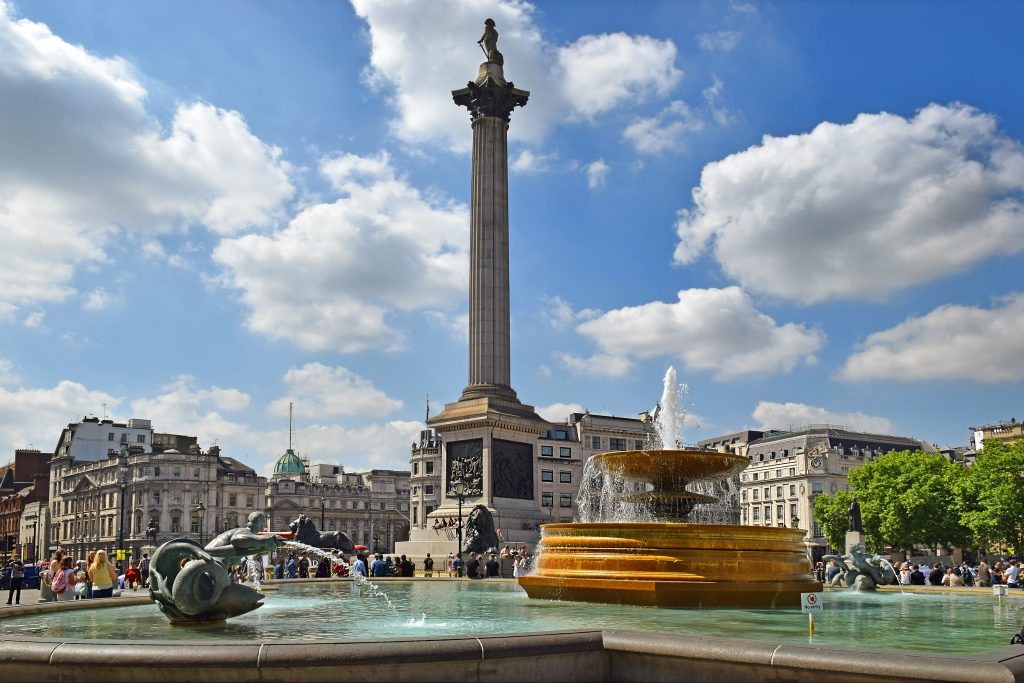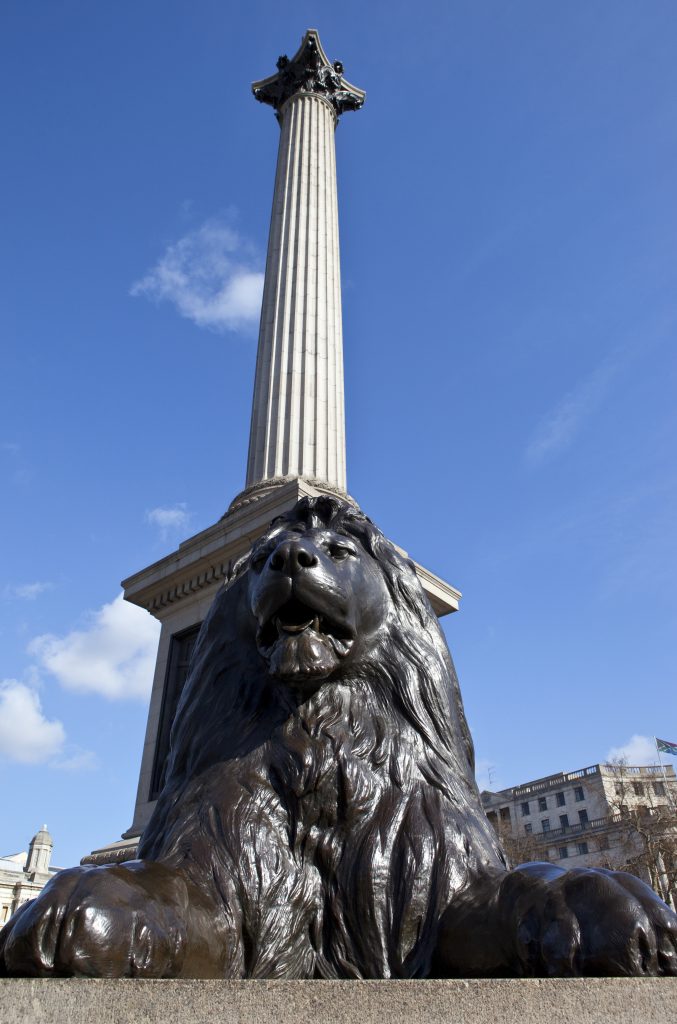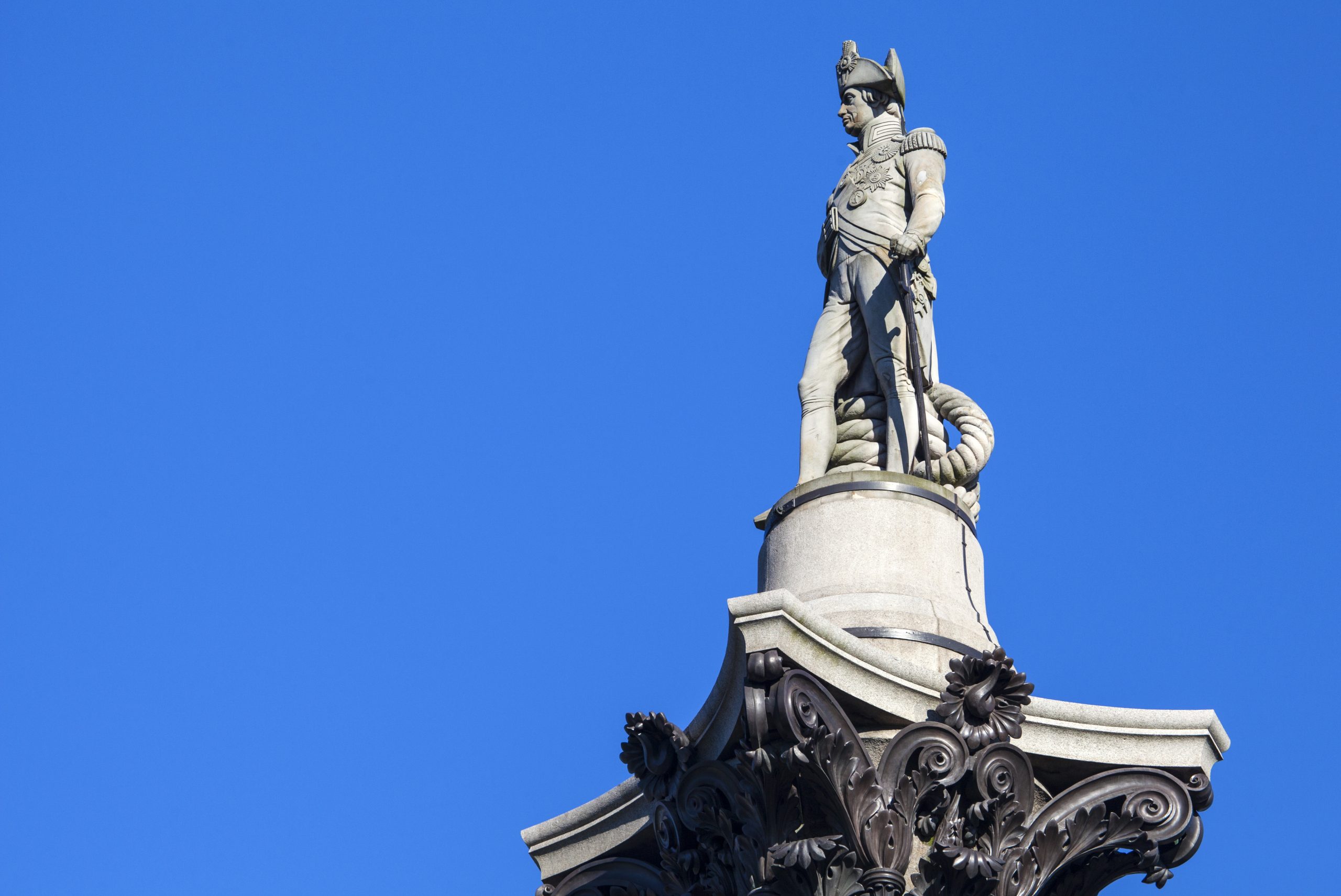It’s officially the centre of London and the gathering place for both protesters and revellers, most tourists will at the least pass through here but why is it called Trafalgar Square and how did it come to be here?
The route of the story is undoubtedly Admiral Nelson, the British hero who died during his greatest hour at the battle of Trafalgar and became the first commoner to have a State funeral in British history.
This is actually very unusual and shows the status he enjoyed amongst the British people, in fact there have only been a further 11 State funerals for commoners since, the last one being in 1965 for Sir Winston Churchill.
Historically
The site of Trafalgar Square had been an area of some importance dating back to the 1200’s and originally housed the Royal Mews, a major road junction had existed here for 100’s of years at what was known as Charing Cross. The name Charing Cross came from the fact that Edward I erected a cross here in memory of his dead wife, he actually erected twelve crosses on the journey between the place of her death in Nottinghamshire and Westminster. Charing Cross would be the most famous, but Waltham Cross also still bears the cross in it’s name.
The site of the original cross is where distances to London are now measured from, so if you stanf on the plaque there you are as central in London as it’s possible to be. It bears the following inscription;
“On the site now occupied by the statue of King Charles was erected the original Queen Eleanor’s Cross, a replica of which stands in front of Charing Cross station. Mileages from London are measured from the site of the original cross.“
The battle of Trafalgar took place in 1805, Nelson’s state funeral not happening until January 9th 1806 and it would be reasonable to assume that planning began soon after for his memorial, this however was not the case.

Clearance
In 1826 the appropriate authorities engaged John Nash, a foremost architect to draw up new plans for the area which included a large open space in the centre, Nash had earmarked this space for a new building for the Royal Academy.
Clearance of the area and the beginnings of development were soon under way but progress was hampered by the death of Nash. The plan for the square was to name it after William IV for his 1830 ascencion to the throne.
By 1838 the National Gallery had been added, built to a design by William Wilkins, and he was addressing the rest of the area and drawing up plans for that. Once more however, death stopped progress and it passed to Charles Barry who continued with the project, one of his chief aims was to increase the visual impact of the National Gallery.
It was around 1835 that a decision was made to name the square ‘Trafalgar Square’, thirty years after the battle and Nelson’s death.
Nelson’s column
The column, along with the statue of Nelson on top was a completely separate idea and not linked to the original naming idea. There were a number of memorial columns and statues of Nelson erected after his death from Glasgow to Dublin so London was a long way behind in this respect.
There had been a fund set up by a wealthy Lloyds underwriter to create a lasting memorial to Nelson as early as 1806 but it had never raised sufficient funds to create anything considered worthwhile, the original fund however did sit in an account accruing interest and eventually was used toward the project.
Ironically the oldest remaining column in the world is actually in Montreal, Canada, I’m guessing it causes the raising of some Gallic eyebrows?
The famous column itself was constructed between 1840 and 1843 and contains bronze relief panels around the base which were cast from captured French guns.

Lions
The lions at the base of Nelson’s Column in Trafalgar square were added in 1867 and are bronze, weighing seven tonnes each. The sculptor Edward Landseer had taken a dead lion from London Zoo which he used to help design the work, however he took so long over his sketches that by the time he had finished the lion was decomposing badly. It’s believed that this is the reason the Barbary Lions portrayed have paws which resemble those of a domestic cat.
In 1940 the Nazi SS had drawn up plans to transport Nelson’s Column to Berlin after a succesful invasion of Britain. Hitler believed the column represented Britain’s naval might and would be a fitting victory prize after the nation was succesfully subdued.
Depending upon how you choose to look at it, London’s most famous square could be considered to be decades, or possibly centuries in the making.
